When you’re moving house, the last thing you want to worry about is how to pack. But packing for a move can be tricky- especially if you don’t know what you’re doing.
Honestly, you might have chosen the best real estate agent or company (like Finlay Brewer) to get a hold on the property you had been eyeing, and have even decided on when and how you would to initiate the move. But have you planned enough for it?
Your reason for shifting home can be anything. Maybe you have sold your property to a company like Crawford Home Buyers (if interested, you can check out this woodstock ga cash offer) for quick cash and wants to pack your stuff as soon as possible. So, when you’re moving house, the last thing you want to worry about is how to pack. But packing for a move can be tricky- especially if you don’t know what you’re doing. There is a lot you need to think about before getting started on your packing, such as –
- What kind of packing materials will you need?
- How many moving boxes are enough?
- Will you need a moving company?
- Have you made an inventory list of what you’ll be moving?
All of these need to be thought about before making a start on moving. Of course, you might have already talked to your realtor Lynchburg about the arrangements that are needed at your new home. Right now, you need to focus on the packing facility you have at your current place. So, if you are in a bit of a bind and have been pondering if your packing supplies are good enough or how to use packing paper, then here are some tips on how to pack your house for a move so that everything arrives safe and sound at your new destination.
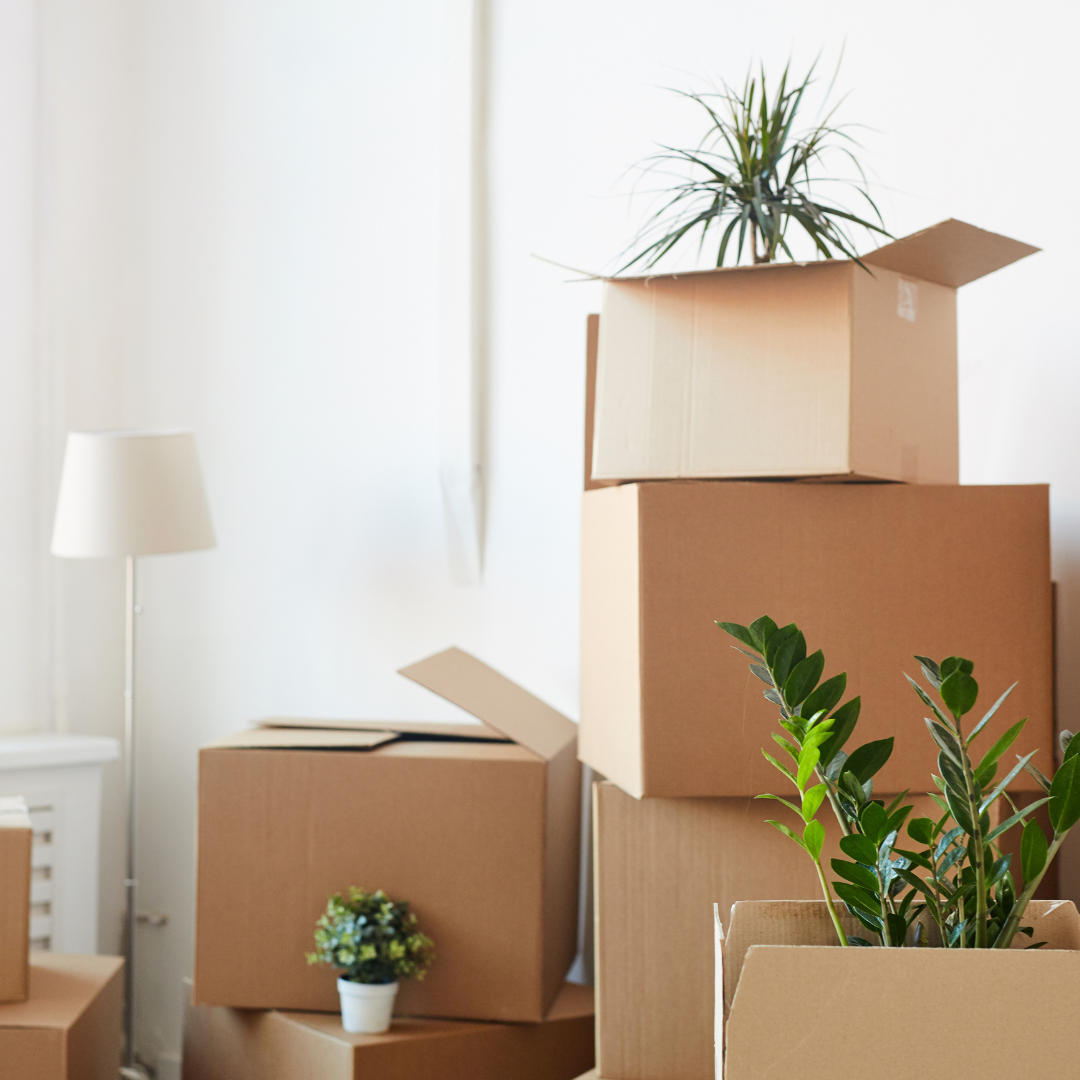
Planning
Start with a plan. Before you start packing, it’s important to have a plan. Make a list of everything that needs to be packed and put it in order of importance. This will help you stay organized and ensure that nothing gets left behind.
You will want to section off your rooms with what you need to pack from each so you can approach it from a strategic point of view.
Living room
Your living room may be the biggest in the house, especially if it merges with your dining room. Think about what you have in there and how you’ll need to move it.
- Sofa and chairs
- Coffee table
- Rug
- Curtains
- Candles
- Artwork and pictures
- Ornaments
- Television
Kitchen
Your kitchen is going to hold a lot of electrical appliances so it is essential that when you pack them away you keep the plugs secure and safe with the right packing materials so it is stress free.
- Dinnerware
- Silverware
- Pots and pans
- Refrigerator and freezer
- Microwave
- Food items
Bathroom
Unless you are taking the bath and sink with you on your move, the bathroom isn’t going to be a room that will need a lot of packing up, however, there are still essential items in there that are important.
- Toothbrush and toothpaste
- Medicines
- Hair products (shampoo, conditioner, mask, brushes, dryer)
- Deodorant
- Makeup
- Towles
Bedroom
Your bedroom can be the hub for many items that are essential to you, so you do not want to miss these items. Like your living room, there will be big items, and if you have multiple bedrooms then you are going to need to label the boxes properly to ensure there are no mix-ups.
- Bed and bedding
- Clothing (for any items in your wardrobe, it may be wise to put some of them into wardrobe boxes and put the other hanging clothes in big plastic bags/garbage bags with ties at the top so they are not creased – look at the clothing section)
- Vanity
- Bedside draws
- Lamps
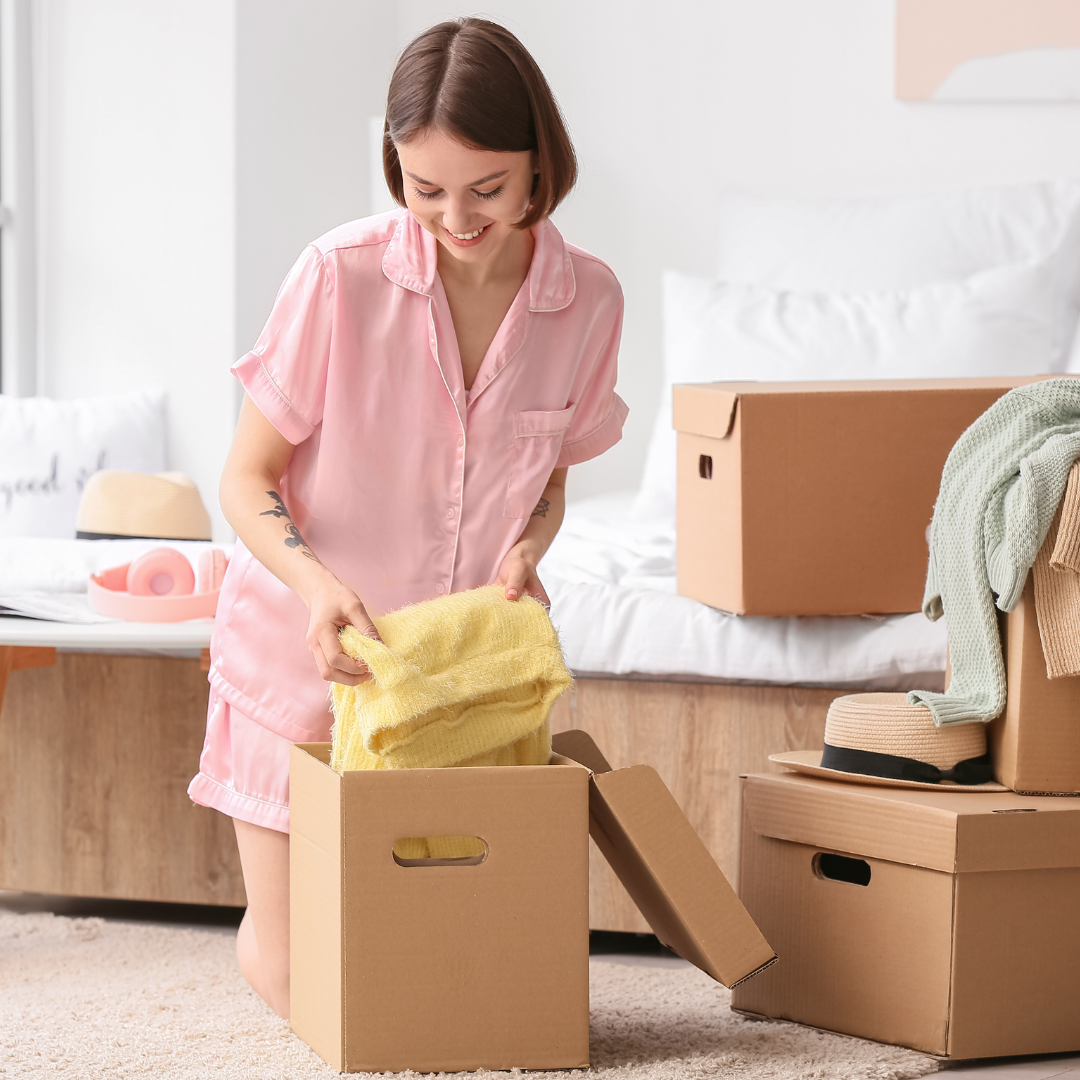
Extra rooms
You may have additional rooms in your home like an attic or basement. If so, make sure you are packing those items up too and labeling the boxes with where they are from as miscellaneous items can get mixed up with other boxes, making it harder to determine where they were initially from. Be sure to wrap delicate items and heavy boxes in bubble wrap.
Materials you’ll need
Gather your materials. Once you have a plan, it’s time to gather your packing supplies. You’ll need large boxes, small boxes, packing tape, markers, packing paper, plastic bags, and bubble wrap. It’s also a good idea to have a few old blankets or towels on hand to protect your belongings during the move.
Get extra
You never know how the moving day will turn out, you could lose some of the materials, misplace items, or realize you do not have enough for items that definitely need to be protected. Make sure that your ‘to do list’ has extra moving supplies in bold on it for when you go to the store.
When you are ready to pack clothes and shoes and you see that the boxes you have set aside have tears in them or not enough space, you are going to wish you had bought extra.
Packing tips
Pack one room at a time. Don’t try to pack everything all at once- it will be too overwhelming. Start with one room and work your way through the house. Be sure to label each box with the contents and the destination room. Moving from your old home to your new home is going to be tiring, so picking up as many moving tips as possible is going to help.
Heavy items
Your heavy items will need a lot of care as you are packing them, just like you would with your delicate ones. To ensure the safety of these items, you may need to wrap them properly and securely. In addition, if you are hiring a moving company (such as nyc moving services), these professional movers may have additional materials that you can use to protect delicate items when loading and unloading.
Delicate items
With smaller and fragile items, you will need to use smaller boxes to carry them in so there is little to no space, mitigating the potential for breakage. You may think just getting a large box and putting them all in would be fine, but if you drive over a big bump or take a sharp bend, they may break.
If you can only get a large box for them, then try and fill it with soft packing materials that you can place underneath, around, and on top of the items. It will be a long process doing it bit by bit but these are essential items that you don’t want to just stuff into a box and take a chance.
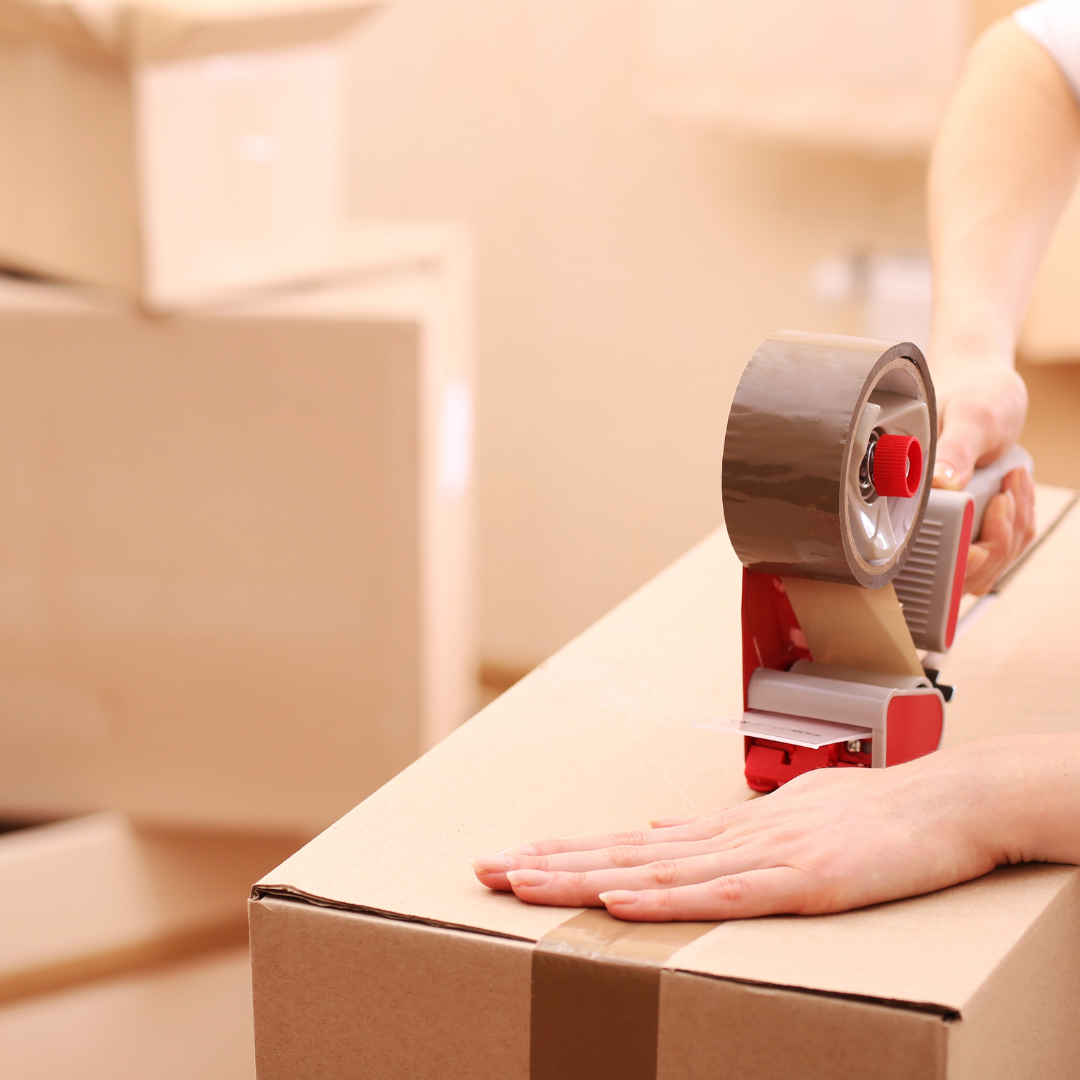
How to pack specific items
Some people need to specifically know how to pack their items for a move, it’s all well and good to know the basics, but what if there is something specific you need to know, or if there are some extra tips that can ensure a smooth transition. Check out these tips below to see how they may be able to help.
Clothing
Pack your clothes carefully. Clothes can be delicate, so it’s important to pack them properly and sort through what you need.
Organize what you have
Before moving, you may want to go through your clothes and see what you actually want to take. A good declutter will help you decide what is important to pack. Anything you don’t want you can donate to a charity shop or give to friends and family.
Wash your clothing
It is a good idea to give your clothes a good wash before packing them so they are fresh and clean for the move. You will not have to worry about washing them when you have arrived as that will be an incredibly busy time, you may still be going to work or school.
Seasonal clothing
Any clothing that is not in season at that time can be packed first, this will get them out of the way and not clog up your room as you pack the rest nearer to the moving day.
How to pack your clothes for moving
- Wardrobe boxes.
- Keep your clothes in your bedroom drawers and move them as one – fewer boxes/bags.
- Hanging items can be moved within a big plastic bag/s, slide them in whilst on the rail, tie the top snuggly and move as one, this will keep the dust and debris off.
- Use vacuum seal bags, great for storage space and neatness.
- Put matching clothing together so it is easier to put away when unpacking.
Shoes
When it comes to knowing how to pack shoes for moving, you may think just chucking them in a box is going to be fine, however, just like clothes they can get damaged in the move, especially if heavier items are placed on top of them without people realizing, so you need to have a plan.
Get rid of old shoes
Sometimes we don’t realize how much we can hoard shoes that we don’t wear anymore, go through the pairs you have, and if they are ones you have not worn for a very long time, then it is time to donate or chuck them if they are haggard and worn down.
Put your shoes in related piles
If you have sharp heels/high heels, then you will need to protect them in the move so the heel does not break off in transit. You might want to pack these shoes in their own individual boxes with the heels wrapped in soft wrapping which will make it a bit easier to transport them. Sneakers can be tied together with their laces and put in a plastic bag.
Tea bags
Did you know that tea bags can be a great way to keep your shoes fresh? Popping a tea bag in each shoe and wrapping them in some old socks, will help with eliminating any bad odors they may have. You do not want to pack them with your clothes in close quarters and have the smell transfer.
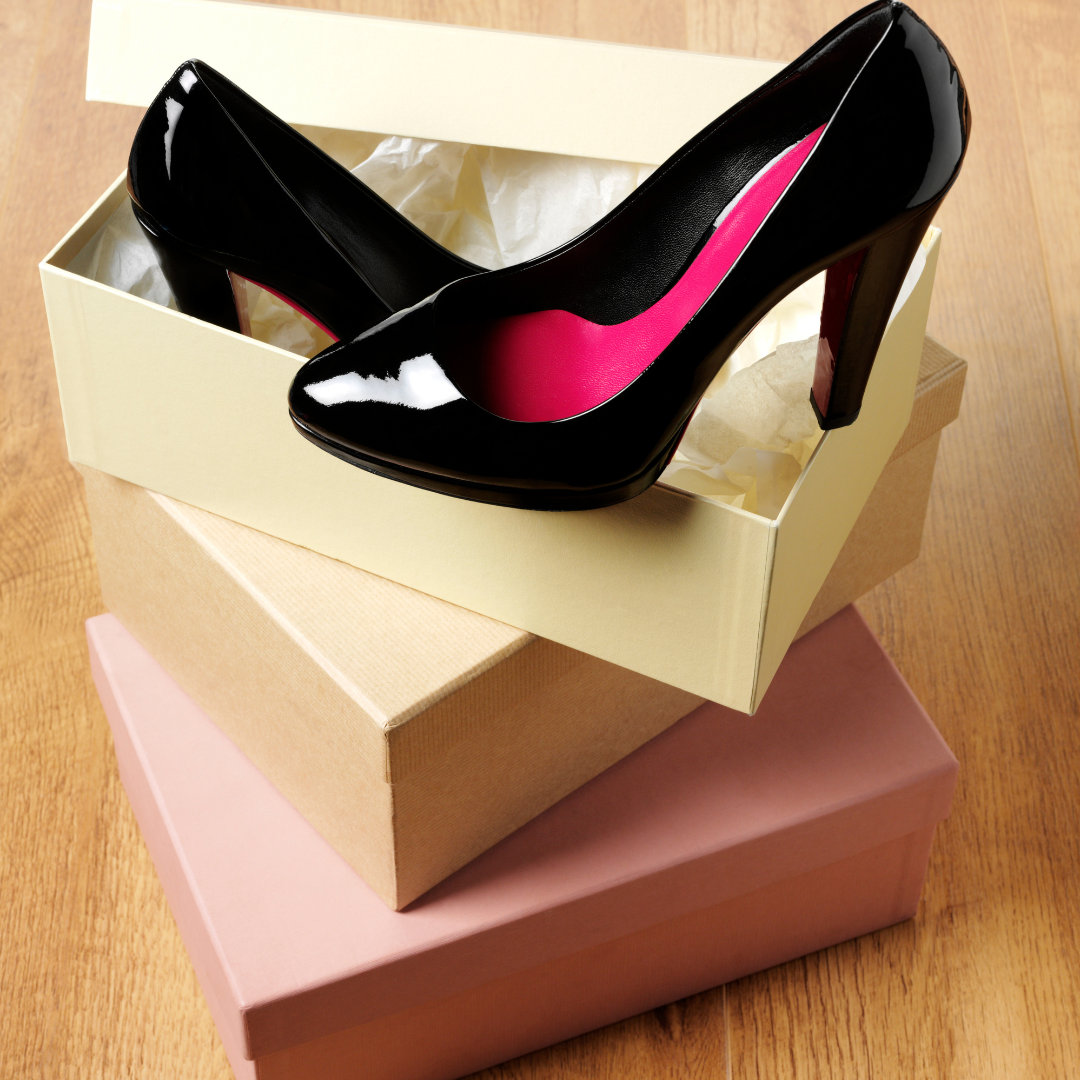
Valuable items
Valuable items like jewelry and electronics need to be packed carefully to avoid damage. You will need to put them in a box and fill it with packing peanuts or crumpled paper to keep them safe, however, each of these valuable items will need to be handled differently.
- Ceramics (plates and crockery) – they should be wrapped individually in a medium box but make sure to not overpack or have many empty spaces in the box.
- Glass – pack glasses individually with packing paper/paper towels inside drink receptacles and lighter items on heavier.
- Silverware – wash and dry them thoroughly before packing and polish the items that need it, and make sure to wrap them in clean cloths to prevent scratches.
- Electronics – color code the cord and label them before unplugging, wrap the wire in cord ties, and then the whole item in bubble wrap and place in an individual box with an electronic label.
- Jewelry – with your earrings you will want to poke them through some cardboard and wrap them in a cloth. You can put your necklaces through a drinking straw and then fasten them together, also wrapping them in a cloth. Put your jewelry in a zip lock bag and then into one of your bedroom boxes.
Furniture
When moving your furniture you might think that they will weather any storm as they are so sturdy, however, the material can rip or stains can appear, especially if they are not wrapped, so it is important that you take great care with them too.
Dismantle larger items
If you are able to break your furniture down by dismantling them, then make sure you put all the screws in one bag with a label and individually wrap your parts with color-coded tape as that will help you put it back together when unpacking.
Moving blankets
You can wrap your furniture in special moving blankets that will offer a cushioned barrier, helping to keep it safe. As soon as that is done, wrapping it in a plastic layer will keep it all sealed in and secure.
Wrap the corners
The corners of your furniture like sofa legs and table tops will need more padding to help keep them scuff-free when moving, as they may get bashed around on the drive, this is especially certain if the drive is very long with many stops and starts.
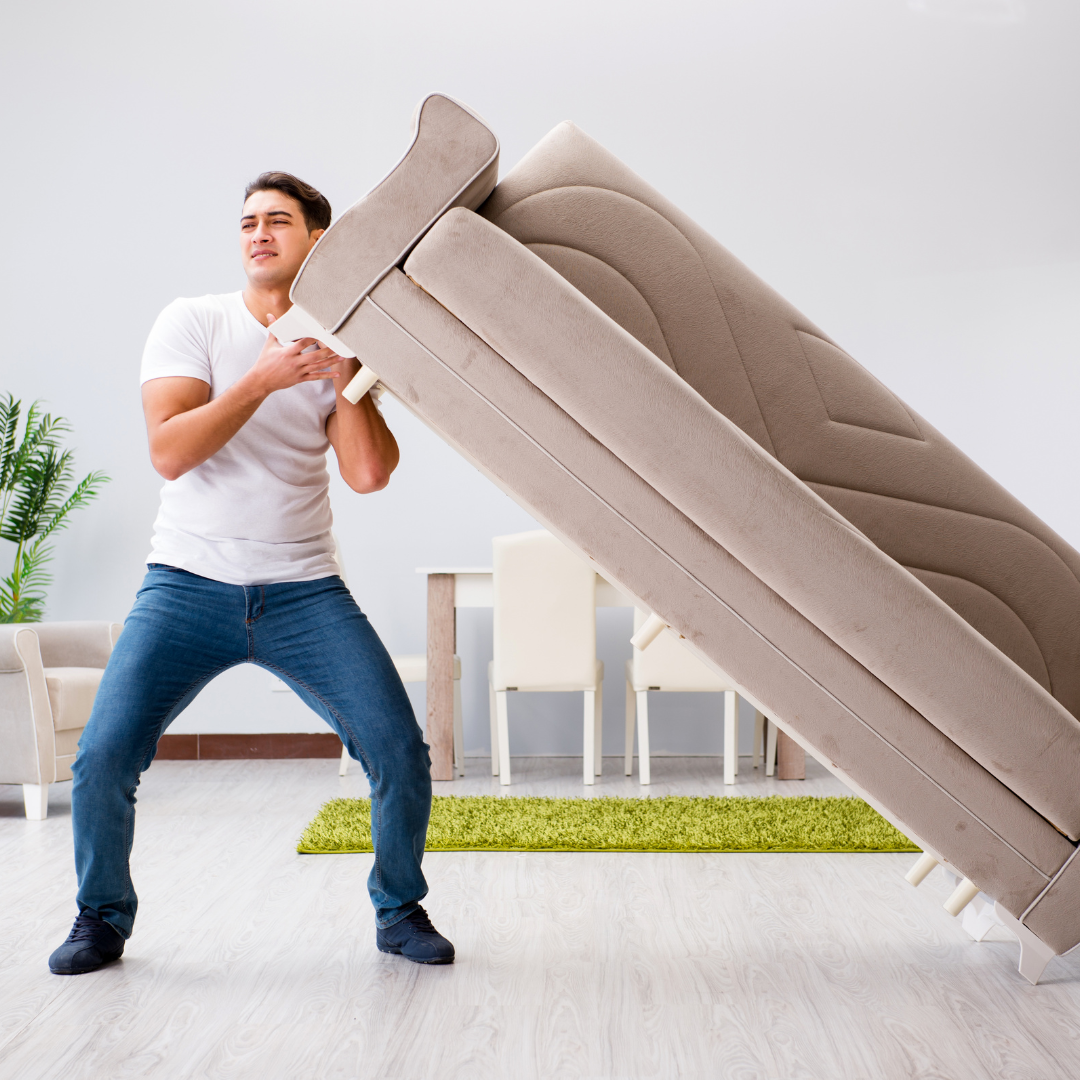
Storage items
Finally, if you have some items that you cannot move into your home straight away, then you will need to put them into storage. These packing tips can help with storing your important but not currently needed items too.
All your belongings are important to you, so anything placed in storage still needs to be handled delicately and properly when you store them. Some household items like extra chairs, spare electronics, etc. may be put into storage, so label and color-code each one.
Changing your interior
These items can be handy if you decide to change up the design of your home and are looking to do a big re-decoration after you move in. You’ll be able to see if any of these storage items can be used for your new look.
Just because you can’t move them into your new house at this moment doesn’t mean they won’t be able to go in at a later date, that is why it is important to be careful with them now and create a space that is easy to visit and access when they are needed.
Use storage services
There are many storage services available that can help you with keeping your items safe. Speak to a few either in your new local area or in your old location to see how they can be stored and what the rules are.
Conclusion
These are just some tips condensed down in a bite-sized way that might be able to help you when you are thinking about moving. Hopefully, you have picked up a few new ways of taking care of your things and you’ll be a lot more mindful when the day of the move comes.

